Avalanche Courses - what are your options?
May 23, 2023
Written by ISTD L4 Instructor: George Treble
If you are interested in this topic, You can join the Off Piste Alpine Club and newsletter here.
If you’re a skier or snowboarder who goes off-piste or into the backcountry, hopefully you’ve realised that you need some training about the dangers involved.
Unless you can afford to have a professional guiding you every time you leave the resort trails, it is absolutely imperative to start & continue learning about avalanches and snow safety.
But for those of you looking to get some formal training, you might be wondering which course is your best option.
Maybe you’re wondering if you should you take an AST1 by CAA & AC or an AIARE Rec1 which follows AAA guidelines? Or maybe you’re wondering what on earth all that stands for anyway? Or maybe you’re in Europe, where it’s even more confusing and there is even less standardisation of course content.
There’s a lot of different options out there, so it’s useful to know which one is right for you and how different courses compare with each other.
So if you, or someone you know, wants to go skiing or snowboarding off piste without getting buried alive, read on for five minutes and I’ll clarify the options for ‘recreational’ avalanche courses. These are suitable for those who ski or snowboard as a hobby or sport. The professional tracks for aspirant guides or instructors are a little different so I’ll leave them for another blog post.

Winter mountain environments come with very serious dangers.
Before we get into the practical training courses, here's a quick note on the homework you can do beforehand.
ONLINE COURSES & BOOKS
When it comes to the practical skills and real world scenarios involved in avalanche education, there is no substitute for physical training courses in winter mountain environments. Students need to practise companion rescue procedures in the field, for example, as well as developing the ability to read avalanche terrain, estimate slope steepness and manage groups.
But avalanche education is also highly theoretical, and online courses and reading lists are also an essential part of the pathway. In an ideal world, a combination of online courses, engaging videos and reading resources would be studied before, during and after practical training courses in the real world.
In contrast, any avalanche education pathway which is exclusively practical would leave gaps in a learner's knowledge, in forecasting, mapping or route planning skills for example.
Avalanche Canada has a quick introductory online course called Avy Savvy which covers 8 key parts of Avalanche Safety. Also, the Cherry Bowl Avalanche burial case study is packed full of lessons on companion rescue.
Alpine Tutorials have been collaborating with BCA & BASI to come up with their preparatory online course in off-piste safety, which covers 10 key lessons in avalanche & off piste safety.
When it comes to books, Bruce Tremper's 'Staying Alive in Avalanche Terrain' is perhaps the most respected and widely recommended guide to snow safety. Written in an engaging and easy to understand language, it serves as both a perfect intro for newbies as well as an annual autumn refresher for more experienced mountain folk as well. Now let's move onto the practical courses.
THE AMERICAN PATHWAY
The north Americans have led the way in designing and delivering avalanche training courses.
There are 4 main options on the American track of recreational avalanche courses. Before we get into them, it’s useful to understand what all the different acronyms mean.

The American Avalanche Association (AAA or A3) is a membership organisation which develops and maintains standards for avalanche education in the US. It’s made up of a variety of professionals, from snow science researchers to search and rescue workers, and from guides to forecasters to athletes. A3 oversees recreational and professional programs to ensure quality, consistency and up to date content. It also publishes The Avalanche Review four times a winter, as well as updating the Snow, Weather and Avalanche Guidelines (SWAG) to set the standard for professional documentation and communication.
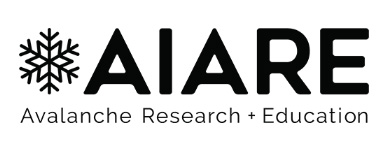
The American Institute for Avalanche Research & Education (AIARE) offers avalanche education and training programs for recreational backcountry travellers as well as avalanche professionals.
So basically, AAA establishes industry standards and guidelines and AIARE takes these into account, prepares curriculum and delivers the courses.
This standardisation of curriculum and course content ensures quality & consistency, which is something we are admittedly lacking here in Europe.
Here’s the 4 recreational options for AIARE courses:
AVALANCHE AWARENESS – 1-3 hour classroom sessions or lectures (you may see these in ski town bars) which gives newbies an intro into the world of avalanches; gear, resources, trip planning, terrain & risk management. To see an overview of the content, click here.
AIARE 1: 3 day courses – 24 hours of contact time with a minimum of 60% of it in the field. The course is designed for backcountry travelers with little to no prior avalanche education and provides an essential foundation for safe and responsible backcountry travel. Expect to cover avalanche basics & characteristics, avalanche terrain, snowpack & weather, information gathering, planning, communication and decision making and field observation skills. To see an overview of the content, click here.
AVALANCHE RESCUE: This is a one-day course designed to provide students with the skills and knowledge necessary to perform effective companion rescue in the event of an avalanche incident – Think avalanche rescue equipment (transceivers, shovels, probes), search & rescue techniques and different burial scenarios. You can check out what these courses entail here.
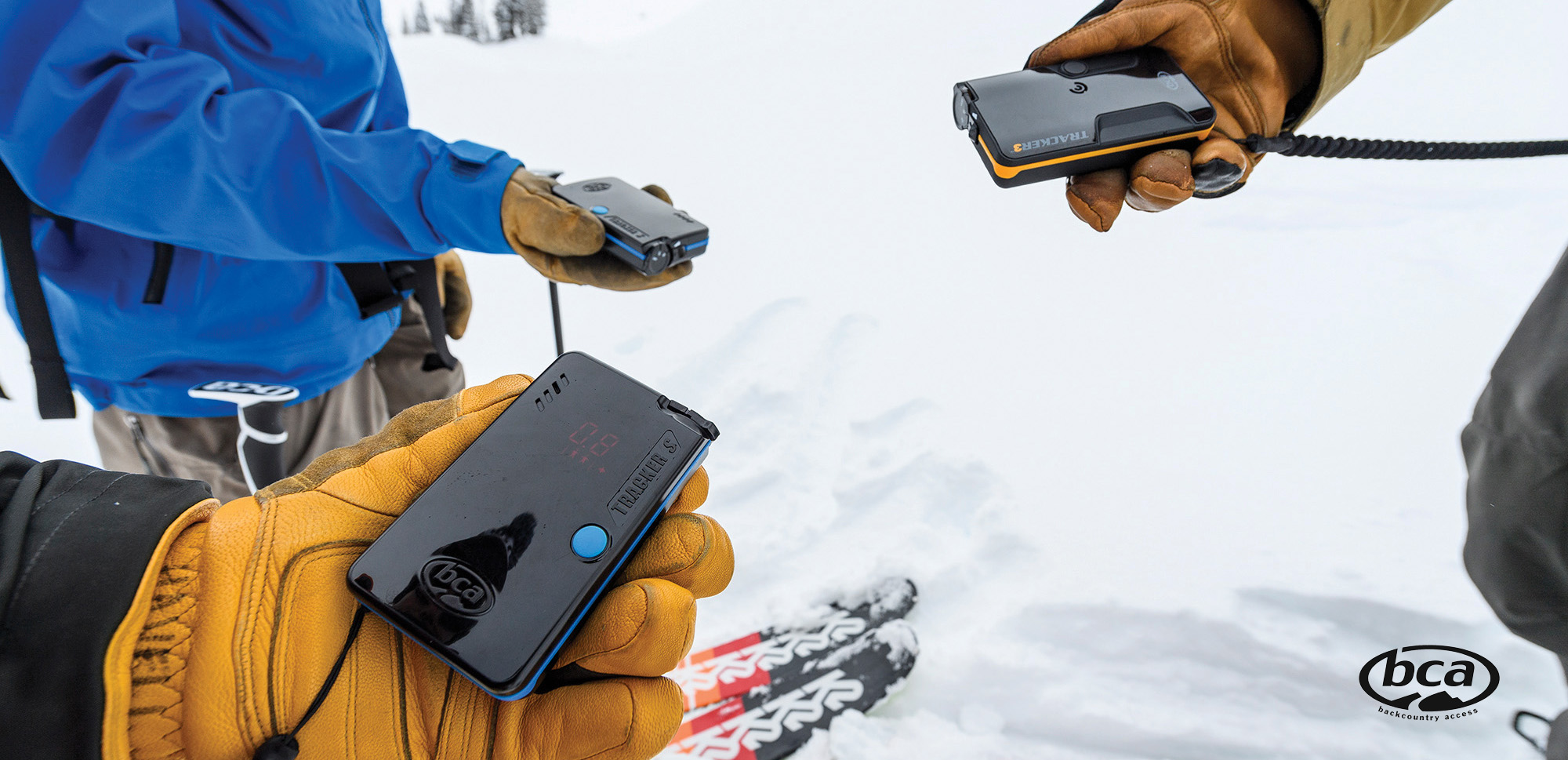
If an avalanche occurred, would you know how to react? Companion Rescue courses help us to prepare.
AIARE 2: designed for those who have previously taken the level 1 & Avalanche rescue courses (or equivalent) and have at least a year of backcountry travel experience. This 24 hour course may be 3 or 4 days, and offers students an opportunity to advance their decision making skills in more complicated situations, such as being a group leader, travelling in more complicated terrain or developing a travel plan where resources are scarce. You can see more details on what the course entails on the AIARE 2 webpage:
THE CANADIAN PATHWAY

Arguably the most well recognised avalanche courses come courtesy of the Canadians. The Avalanche Skills Training (AST) courses are seen as an essential step for any skiers or snowboarders who want to ride powder. If you're looking for new ski or riding buddies, it's pretty common (and understandable) that they will want to know if you have taken an AST course (or equivalent) before they go off-piste with you, and it's a pretty good idea for you to have similar requirements of your partners.
THE AST 1 COURSE: For skiers & snowboarders who leave the trails and go out of bounds, AST1 is the place to start. It requires no previous experience, but it is a must for everyone recreating in the winter backcountry. The AST1 is a minimum of 20 hours of instruction with a mix of classroom and field time, so is usually split over 2 or 3 days. Course content includes:
- Avalanche formation and release
- How to identify avalanche terrain
- The basics of trip planning
- Use of tools and resources like avalanche forecasts to mitigate your avalanche risk
- Travel techniques in avalanche terrain
- An introduction to Companion rescue
You must be able to ski or board powder for the AST 1 but it is OK if it is your first time on touring equipment.
THE AST1 REFRESHER: For those who have taken an AST 1 course in the past, there is also a 1-day refresher course to sharpen and update your skills. This field based course provides a review of the material covered in the AST1 and any industry updates to the curriculum that there may be.
COMPANION RESCUE SKILLS: Similar to the AIARE Avalanche Rescue course, this 1-day course is an important refresher for those with previous training and a great way to improve the rescue skills learned on an AST1: Students are taught how to respond safely and effectively to an avalanche incident; how to perform transceiver searches, use probes and how to shovel efficiently (arguably the most important bit!)
MANAGING AVALANCHE TERRAIN (MAT) For those who have taken an AST1, the MAT course is a field based course designed to develop advanced winter backcountry travel skills and mitigate your risk by honing your terrain evaluation and travel skills. This includes how to recognise and classify avalanche terrain, the skills required to help plan, prepare and execute a safe backcountry trip and the techniques to minimise risk when travelling in the backcountry. You can also take an AST1+ course, which is a combination of the AST1 & the MAT
THE AST 2 COURSE: For those who have taken the level 1 and have a solid experience in the backcountry. The AST2 builds on the foundations of an AST1 and provides a more advanced decision making framework for travelling in avalanche terrain. An AST 2 course comprises a minimum of 9.5 hours of classroom instruction with a minimum of three days in the field.
- Planning and travel techniques for travelling through various types of terrain.
- Using the danger rating on a local scale.
- Techniques for applying the Avalanche Terrain Exposure Scale (ATES) technical model to develop personal, local terrain ratings
- Proficiency in companion rescue
The AST2 is for intermediate to expert skiers & boarders
Many providers of the AST2 will require good physical strength and stamina to cover at least 1,000m and 5km on touring equipment
By the way, if you're wondering what's the difference between CAA and Avalanche Canada, the simplified answer is that the Canadian Avalanche Association (CAA) sets standards and training for professionals, whereas Avalanche Canada provides info & courses for the public.


A size 2 slab avalanche at 2000m in the Swiss Alps
THE EUROPEAN OPTIONS
Perhaps due to the language barriers between Alpine & Scandinavian Nations, European avalanche courses lack the standardisation and consistency of the north American curriculum. That's not to say that quality avalanche education is not available, because it certainly is, it's just that the course titles and structures aren't standardised across the continent.
Assuming you speak English, you may wish to find a course provider who offers official AST or AIARE courses in Europe, although these are mostly expensive and irregular.
The alternative is to take mountain safety & avalanche training courses which have been designed by individual organisations or guides. Ideally, these will have taken AIARE and/or AST curriculum guidelines into account and tweaked them to have more relevance to their local environment.
Here's a couple of examples:
Avalanche Geeks provide AIARE syllabus courses in the Alps
Avoriaz Alpine Ski School provide adapted AIARE course syllabuses which also include ski tuition & guiding within the course.
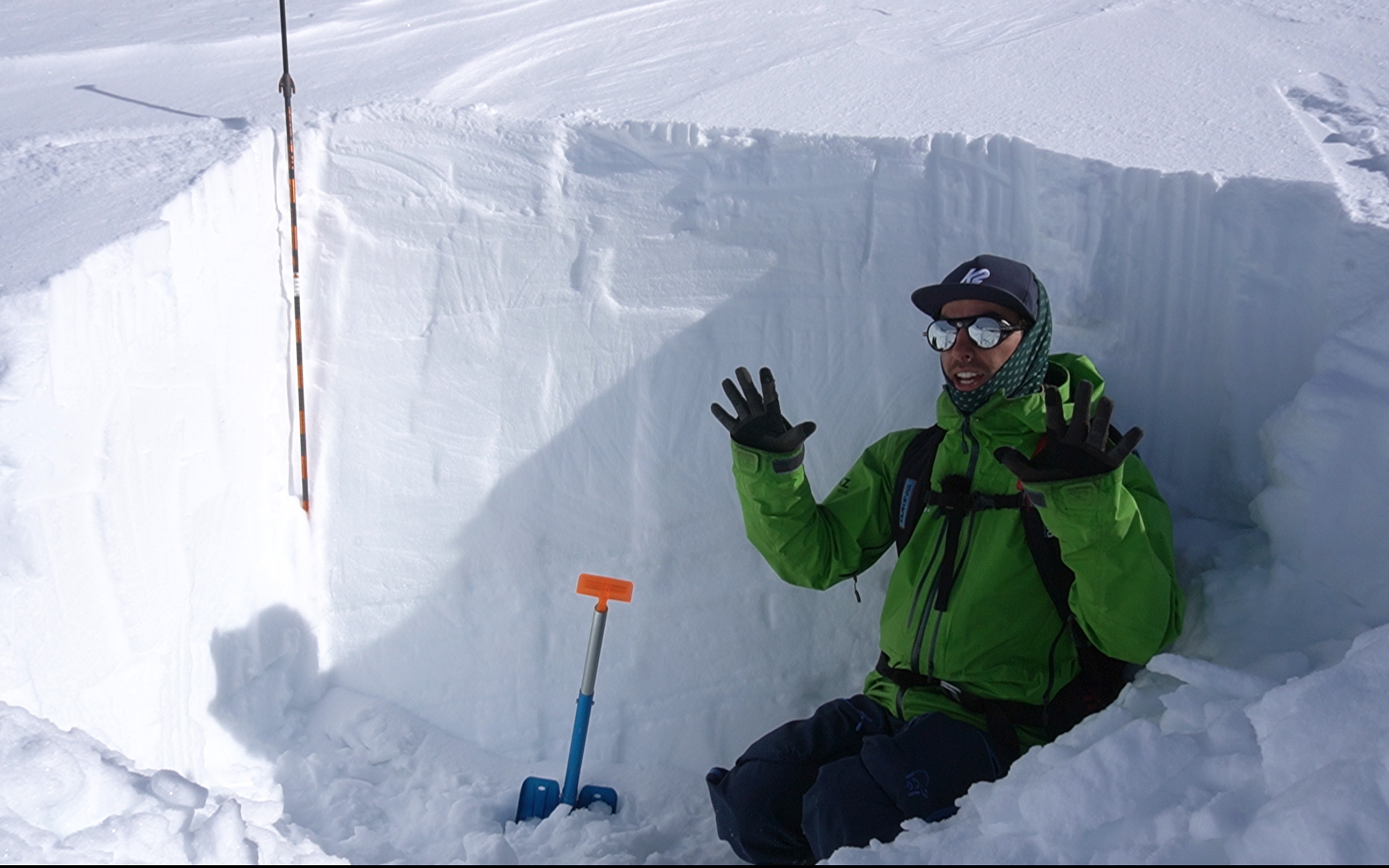
Adapted Avalanche courses with off piste ski tuition by Avoriaz Alpine Ski School
If English is your second language, you may wish to take Avalanche training in your mother tongue. Here's a few useful pointers:
- NORWAY - in Norway, Norsk Fjellsportforum (NFS) oversees avalanche education and safety in Norway. Also, Varsom.no is an online platform which provides comprehensive avalanche information, including current snow conditions, weather forecasts, and avalanche bulletins for different regions in Norway.
- GERMANY - The Germand Alpine Club (Deutscher Alpenverein - DAV) - offers avalanche education programs and courses through its network of regional sections and mountain schools. Also, the Ortovox Safety Academy provide avalanche training courses
- FRANCE -The Club Alpin Français - CAF offers a range of educational programs and courses related to mountain activities, including avalanche safety. Furthermore, ANENA (Association Nationale pour l'étudie de la neige et des avalanches) provides resources, publications, and educational materials on avalanche safety, risk prevention, and rescue techniques.
- AUSTRIA - The Austrian Alpine Club (Österreichischer Alpenverein - ÖAV) The Austrian Alpine Club offers a range of avalanche education courses and programs through its network of regional sections and mountain schools.
- SWITZERLAND - Check out Swiss Avalanche Training or the Swiss Federal Institute for Snow and Avalanche Research (SLF
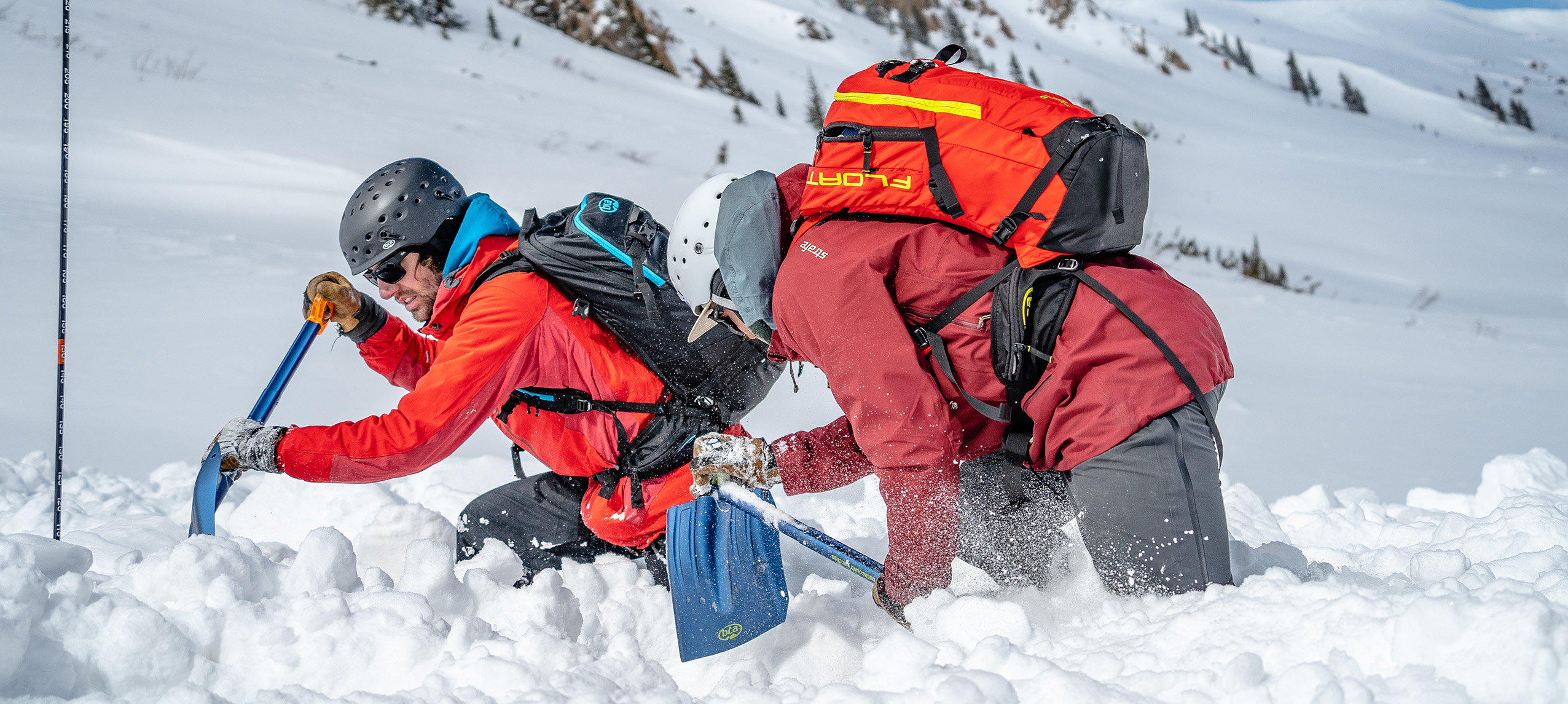
All avalanche training courses will involve some degree of companion rescue training - the use of trnsceivers, probes and shovels to find and excavate a buried avalanche victim. (Image by BCA)
NEW ZEALAND
The New Zealand Mountain Safety Council (MSC) is a national organisation which promotes outdoor safety in NZ, which also It oversees the NZ Avalanche Advisory. The MSC develops and oversees the avalanche education curriculum in NZ. These are the main courses available:
AVALANCHE SKILLS COURSE (ASC1) - an introductory course typically taught over 1.5 - 2 days.
AVALANCHE SKILLS COURSE 2 (ASC2) - This is a longer, more comprehensive course for those who have some avalanche education under their belt and already have some experience recreating in avalanche terrain. This is typically taught over 4 days or as part of a wider skills course.
You can find a list of NZ Avalanche course providers here.
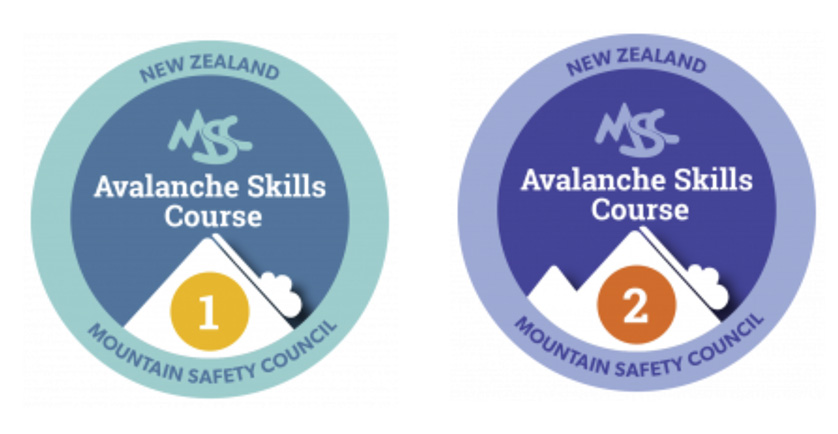
CONCLUSION
For any skiers or snowboarders who wish to go off piste or backcountry snow sliding, regular & formal avalanche training is a must, even if it is a refresher. There are a number of course providers around the world, and whilst the AIARE and AST courses are the most standardised and well known, there are still many quality options offered in other parts of the world.
When you find a potential course, be sure to check the outline of the course content. You may wish to bookmark & re-visit this blog to compare different options - it is full of links to the relevant websites and documents so you can check out the syllabuses and curriculum of different courses. I'll aim to make updates and fill in the gaps. I hope it's useful!

